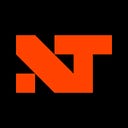The Practical Application of Time Price Opportunity (TPO) Profile Charts in Futures Trading
Watch below as Richard Bailey of Axia Futures explains how NinjaTrader’s Time Price Opportunity (TPO) profile charts can be useful to traders looking for unique trade opportunities based on intraday trading activity. TPO profile charts are available in the NinjaTrader web platform as a charting style.
Topics discussed in this free livestream:
- What are TPO profile charts?
- How TPO profile charts combine price and time to divide price action into levels of support and resistance
- How TPO profile charts can help identify key intraday price levels
- How to identity unique TPO profile patterns
What are Time Price Opportunity Profile Charts?
NinjaTrader’s Time Price Opportunity (TPO) profile charts are similar to the Market Profile charts that were introduced in the 1980s by J. Peter Steidlmayer, a trader at the Chicago Board of Trade. His goal was to create a method that revealed the intraday market structure, enabling traders to better understand the distribution of price over time. The innovation behind Market Profile lies in how it organizes data into recognizable shapes, helping traders visualize price action and market sentiment throughout the trading day.
Steidlmayer’s Market Profile revolutionized intraday analysis by introducing several new analysis concepts including, the Point of Control (POC), the Value Area, and the importance of the time spent at each price level throughout the day.
How TPO Profile Charts Work
Market Profile divides the trading day into 30-minute time blocks, also known as TPOs (Time Price Opportunities). Each TPO represents a specific price at which the market traded within that timeframe. By stacking these TPOs vertically, traders can see how much time the market spends at each price level, highlighting areas of high interest (value) and low interest.
In building the TPO profile bar, the small letters (e.g., a, b, c) represent specific 30-minute time intervals during a trading day. Each letter corresponds to a price range where trading occurred within that half-hour period. The sequence of letters builds a profile that shows how price and time interacted, with the most frequently traded prices forming a “value area” and extremes indicating support or resistance levels. This visual helps traders identify key areas of interest, such as balance or imbalance in the market.
The price where the most TPOs accumulate is called the Point of Control (POC), representing the level of highest activity or perceived fair value during the day. The upper and lower limits of where 70% of the day’s trading activity occurs define the Value Area, offering insights into where buyers and sellers are agreeing on price.
Popular TPO Profile Chart Patterns
Uppercase P-Shaped Profile (Bullish)
The uppercase P-shaped profile often signals short covering or the end of a downtrend. It features a long vertical tail on the lower end, followed by a tight balanced range at the top. This pattern typically indicates that initial sellers were squeezed out by aggressive buyers, leading to a rally. The buyers dominate in the later stages of the trading session, pushing prices higher and leaving behind little resistance at lower levels. This pattern is usually seen as bullish, especially if the next trading session begins above the POC.
Lowercase b-Shaped Profile (Bearish)
The b-shaped profile is the inverse of the P-shape, and it is a sign of long liquidation or the end of an uptrend. This pattern shows a heavy concentration of TPOs at the bottom and a thin tail at the top. The profile suggests that buyers who had accumulated positions earlier in the trend are now selling off, weakening demand and causing prices to drop. This pattern is generally seen as bearish, particularly if the market opens the next day below the POC.
Double Distribution (Neutral to Bullish or Bearish)
The double distribution pattern consists of two distinct clusters of TPOs with a clear separation or thin volume area in the middle. This shows that the market is transitioning from one price range to another, often driven by new information or a sudden shift in sentiment. Depending on the market context, a double distribution can be either bullish or bearish. If the profile starts at lower prices but later establishes a higher distribution, it is typically bullish, indicating that buyers are in control. Conversely, if it begins higher and moves to a lower distribution, it signals selling pressure and is seen as bearish.
Use TPO Profile Charts Today
TPO profile charts are a powerful tool available on the NinjaTrader web platform that provides a unique perspective on market structure throughout the trading day. By combining price and time to show areas of value, traders gain insights into support and resistance and zones of price interest. By understanding the balance between buyers and sellers at different price levels, traders can make more informed decisions.
Unlock Free Exclusive Training
Explore the foundational concepts of technical analysis with our free multi-video trading course “Technical Analysis Made Easy”. Learn how to analyze and anticipate market movements using market prices, volume data, and more.
We’re Live Every Trading Day
Prep for the trading day ahead, analyze the markets in real time, and explore our award-winning platform during our daily livestream. Watch live here or catch what you missed on our YouTube channel.
Trade Futures with NinjaTrader
Haven’t signed up for your free NinjaTrader account yet? Get started today with a 14-day trial of live simulated futures trading.
